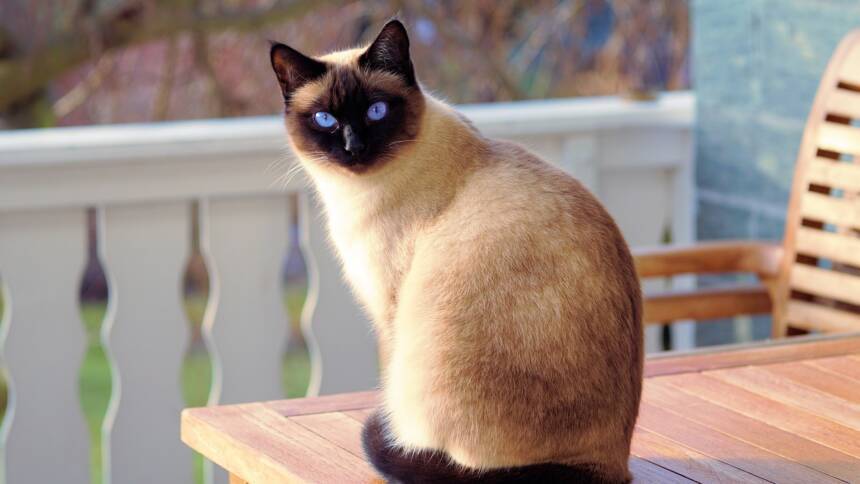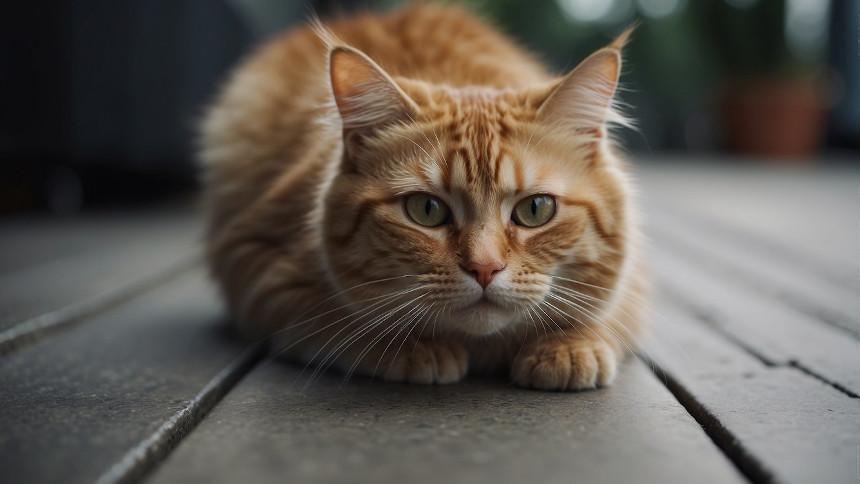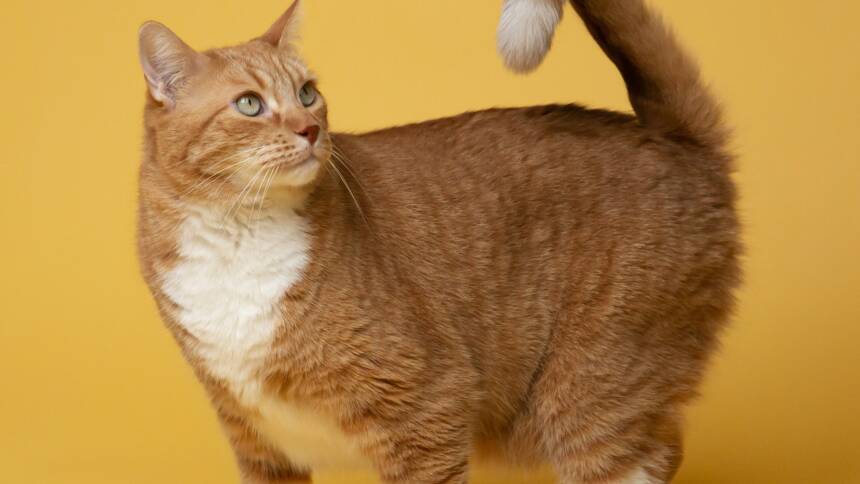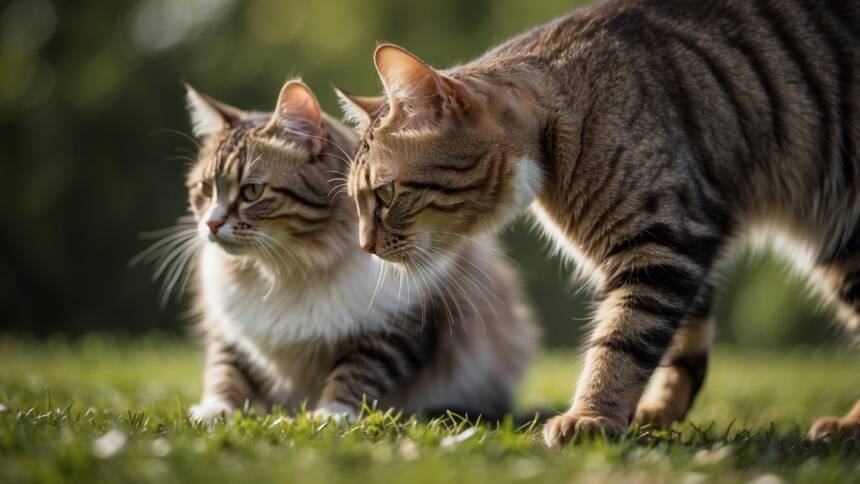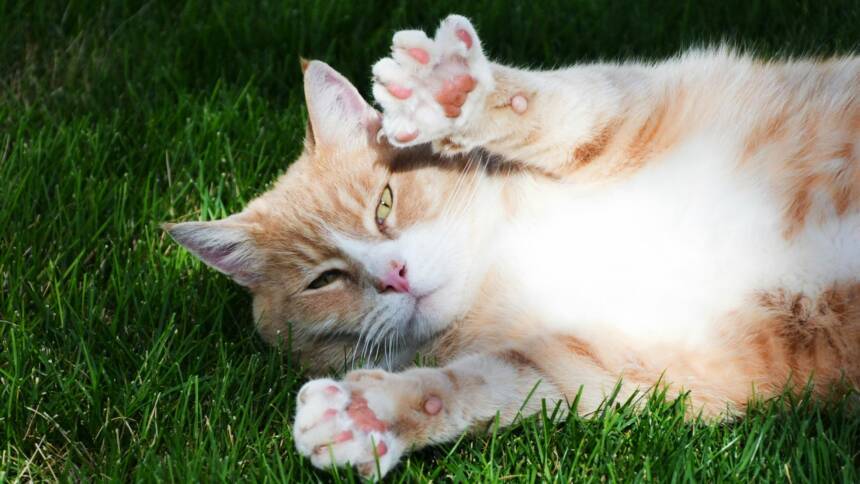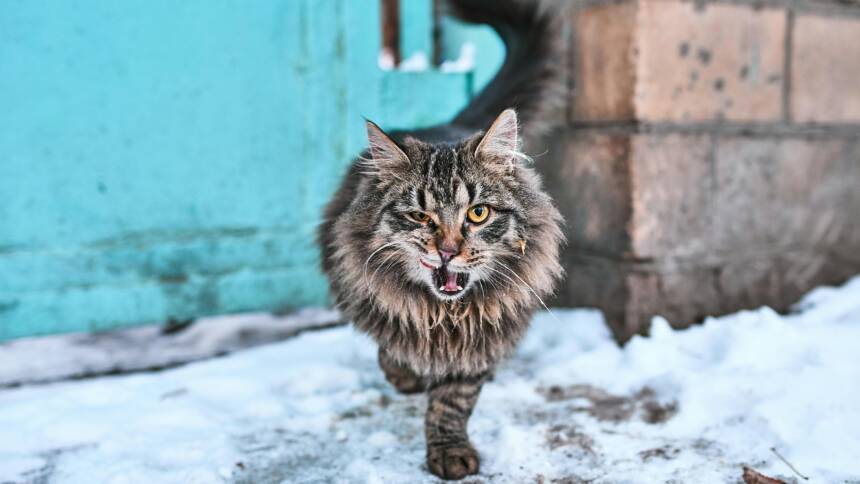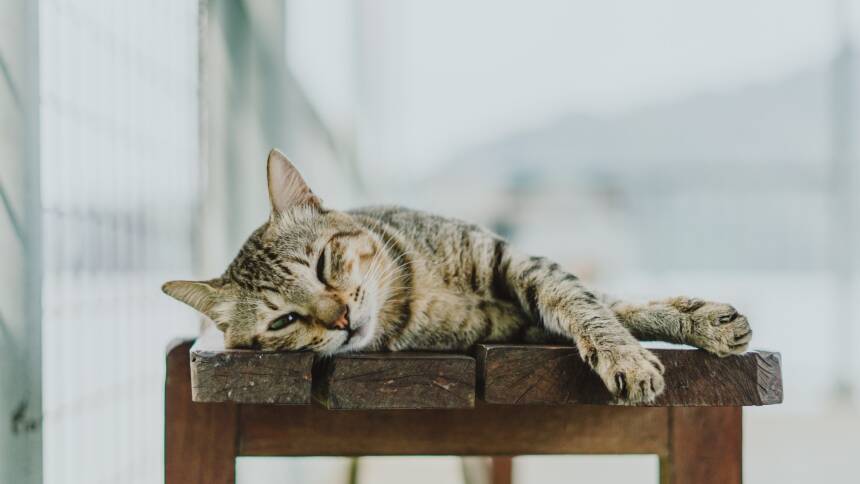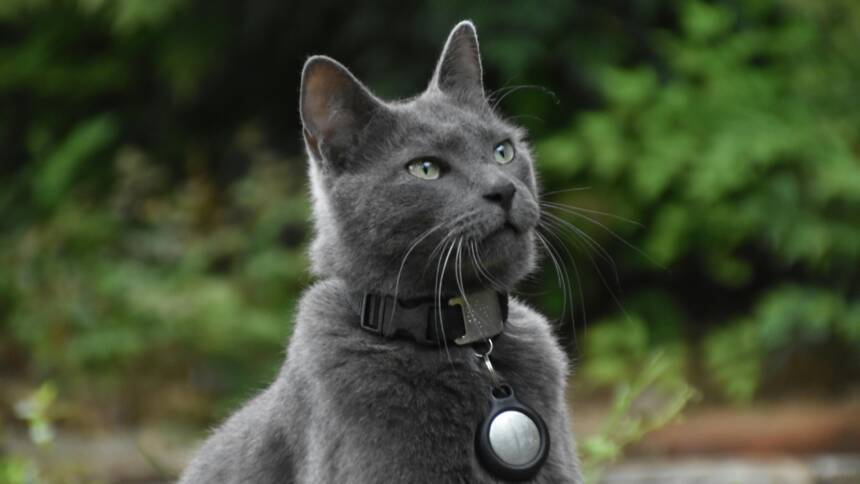When a pet owner finds themselves in the unexpected and somewhat unsettling position of having a cat’s saliva enter their mouth, several health-related questions naturally arise. Cats groom themselves frequently, causing their saliva to be spread across their fur, and sometimes they affectionately lick their owners too. While such behavior is often a sign of affection, it’s important to understand the potential risks associated with exposure to feline saliva.
Cat saliva contains various bacteria, including Pasteurella multocida, which is commonly found in the mouths of cats and dogs. In most cases, these bacteria do not pose a significant problem. However, if there’s an opportunity for these bacteria to enter the body through open wounds like bites or scratches, there is a chance for infection to occur. Symptoms of such an infection can include redness, swelling, and pain at the site of the wound.
Taking precautionary measures is advisable when interacting with cats, especially for individuals with compromised immune systems. Basic hygiene practices such as washing hands after handling pets and avoiding their saliva from entering one’s mouth or any open wounds can reduce the risk of infection. In instances where a cat has bitten or scratched an individual, or someone has inadvertently come into contact with saliva in a way that raises concerns for infection, seeking medical advice is recommended.
Understanding Cat Saliva
Cat saliva is a complex substance with various roles in feline health, from aiding in grooming practices to having enzymes that assist in food digestion. This section explores the makeup and functions of cat saliva, as well as its connection to cat health.
Composition and Functions
Cat saliva contains water, electrolytes, mucus, and enzymes, which are crucial in initiating the digestion of food. The enzymes, specifically, help break down food in the cat’s mouth, easing the digestive process. Salivation is also controlled by the nervous system and can increase in response to the smell, sight, or taste of food, as well as during grooming.
- Enzymes: Assist in food breakdown
- Mucus: Lubricates food and aids in swallowing
- Electrolytes: Help maintain pH balance and hydration
Benefits of Grooming
Feline grooming is a routine activity where a cat uses its saliva and tongue to clean its fur, which has a dual purpose: keeping the coat clean and regulating body temperature. However, this process can also introduce bacteria and other contaminants from the coat into the saliva.
- Coat Cleaning: Removes debris and dead hair
- Temperature Regulation: Helps in heat dissipation
Saliva and Cat Health
While cat saliva is a natural and typically healthy component of feline biology, certain health problems can be indicated by changes in salivation. Excessive drooling—known as hypersalivation—might signal conditions like oral injuries, foreign bodies in the mouth, or even poisoning. Nonetheless, moderate salivation is often a sign of appetite or, sometimes, a display of affection.
- Hypersalivation: Indicates potential health problems
- Normal Salivation: Associated with appetite and affection
While cat saliva itself isn’t inherently harmful to humans, direct contact with human mucous membranes, especially through a cat licking a person’s open wound or mouth, could potentially transmit disease. It’s important to maintain proper hygiene practices to minimize any risks associated with feline saliva.
Risks of Cat Saliva to Humans
While cat saliva is not inherently toxic to humans, it can carry risks through potential zoonotic infections and allergic reactions. Understanding these risks is crucial for ensuring appropriate interactions with felines.
Zoonotic Infections
Cat saliva may carry bacteria and viruses that can cause zoonotic infections in humans. One of the most significant bacteria present is Bartonella henselae, responsible for cat-scratch disease. Humans can become infected if bitten or scratched by a cat, or if the saliva comes into contact with an open wound or the mucous membranes.
- Bacteria: Bartonella henselae can cause infection leading to symptoms ranging from fever to more severe complications.
- Viruses: While rare, it is theoretically possible for a cat with rabies to transmit the virus through its saliva if it comes into contact with a human’s open wounds or mucous membranes.
Rabies, although extremely rare in domestic cats, remains a deadly disease for which there is no cure once symptoms present themselves. It is important to keep cats vaccinated and to seek medical attention if a potential exposure occurs.
Allergic Reactions
In addition to infections, cat saliva contains proteins that can serve as allergens for some individuals.
- Allergens: Exposure to these proteins through cat saliva can cause allergic reactions in sensitive individuals.
- Symptoms: Reactions can range from mild—such as skin rashes or itching—to more severe cases, including coughing, stomach cramps, or diarrhea.
For those with cat allergies, direct contact with a cat’s saliva, like when a cat licks a person’s skin, can be enough to trigger an allergic response. It is recommended for individuals with known allergies to avoid such direct contact and to wash their hands after interacting with cats.
First Aid and Immediate Response
When cat saliva comes in contact with a person’s mouth, it’s essential to act promptly to reduce the risk of infection. Initial actions should include cleaning the exposure site and monitoring for the development of any symptoms.
Cleaning the Exposure Site
The individual should immediately rinse their mouth with water to remove any saliva. It’s crucial to use a generous amount of water and swish it around the mouth thoroughly for several seconds. Following this, spitting out the water and repeating the process multiple times will minimize the presence of potentially harmful bacteria.
Monitoring for Symptoms
After cleaning, the person should watch for signs of irritation or discomfort, which could denote an infection. They should seek medical attention if they experience symptoms such as:
- Redness or swelling at or near the exposure site
- Pain or warmth around the area affected
- Fever, fatigue, or muscle aches indicating systemic infection
- Skin rashes, which might indicate an allergic reaction
If any severe symptoms such as seizures or changes in vision occur, immediate and urgent medical care is necessary.
Medical Evaluation and Treatment
When a person is exposed to cat saliva, it is essential to understand the potential need for medical evaluation and treatment. The importance of this process is to ensure an accurate diagnosis and to provide the correct treatment if necessary, which may include medications or supportive care.
Seeking Professional Care
If cat saliva has entered a person’s mouth, he or she should consider seeking professional medical attention, especially if there are signs of infection or if the exposure was due to a bite or scratch. Healthcare providers can offer advice and determine whether further assessment is warranted based on symptoms and history of the exposure.
Diagnostic Procedures
During a medical evaluation, healthcare providers will conduct a physical exam, looking for signs of infection such as redness, swelling, or pain at the site of exposure. If symptoms suggest an infection, diagnostic tests such as cultures may be performed to identify the presence of bacteria like Pasteurella multocida, commonly found in cats’ mouths.
Treatment and Medications
The course of treatment will depend on the diagnosis. If a bacterial infection is confirmed, antibiotics are commonly prescribed to prevent or treat the infection. In the absence of a bacterial infection, the healthcare provider may recommend supportive care, including cleansing the affected area and monitoring for the development of symptoms. It is crucial to complete any prescribed medication course even if symptoms improve before the medication is finished.
Potential Complications from Exposure
Upon accidental ingestion of cat saliva, an individual may face certain health complications. These issues range from bacterial infections, many of which could lead to serious illnesses if not treated promptly, to the broader risks associated with disease transmission.
Bacterial Infections
The most common bacteria found in a cat’s mouth is Pasteurella multocida, which can cause pasteurellosis. If cat saliva enters a wound or if an individual is bitten, it can lead to infection. Signs of an infection include:
- Redness
- Swelling
- Pain
- Warmth at the wound site
Prompt medical attention is crucial, as untreated infections can escalate, potentially leading to more serious health complications such as kneeid disease, gum disease, or other dental diseases. A professional should conduct an oral examination of the cat if contamination of a human occurs to assess the oral health of the pet and risk of disease transmission.
Disease Transmission Risk
While rare, the transmission of zoonotic diseases – those that can pass from animals to humans – can occur through cat saliva. The health risks extend beyond simple bacterial infections. The following are diseases potentially carried in feline saliva:
- Cat Scratch Disease (Bartonellosis)
- Rabies
- Toxoplasmosis (though typically from feces, saliva can be an intermediary if contaminated with fecal matter)
The likelihood of disease transmission increases if the individual has a compromised immune system. Moreover, more severe symptoms, such as fatigue, muscle aches, skin rashes, or in extreme cases, neurological complications, may manifest. It’s essential for individuals who have come into contact with cat saliva and are experiencing symptoms to consult with healthcare providers.
Preventive Measures and Cat Hygiene
Preventive measures are essential for maintaining the hygiene of cats and reducing the risk of dental issues. Appropriate grooming and dental care practices play a crucial role in managing the overall health of cats.
Proper Grooming Practices
Regular grooming is paramount in preventing the accumulation of bacteria in a cat’s fur, which could otherwise end up in its mouth and potentially in the owner’s mouth. Brushing a cat’s fur helps to remove loose hair and dander, reducing the chance of ingestion during self-grooming.
- Frequency: Ideally, cats should be brushed several times a week.
- Tools: Use a brush suitable for the cat’s fur type.
- Technique: Gently brush in the direction of hair growth to avoid discomfort.
Dental Care for Cats
Dental health directly impacts a cat’s overall well-being. To prevent dental problems, owners should implement a dental care routine for their feline friends.
- Dental checkups: Regular checkups with a veterinarian can detect early signs of dental diseases.
- Brushing: Brush a cat’s teeth with vet-approved toothpaste to prevent plaque buildup.
- Diet: Feed cats a balanced diet that provides dental benefits.
- Toys and treats: Encourage chewing using toys and treats designed to promote dental health.
By implementing these grooming and dental care strategies, owners can help prevent health issues related to cat saliva.
Recognizing Underlying Health Issues in Cats
When a cat exhibits signs of ill health such as excessive drooling or changes in eating habits, it’s important to consider these as potential indicators of underlying health problems. They can range from dental diseases to systemic illnesses like kidney issues or cancer.
Signs of Oral Diseases
In cats, oral diseases often manifest through various symptoms that can be easily observed. It’s critical to recognize these signs to provide prompt medical attention:
- Dental Disease and Gum Disease: Indicators such as bad breath, drooling with blood, and difficulty swallowing can signal dental problems or gum disease.
- Mouth Ulcers and Stomatitis: A cat may exhibit oral pain, noticeable discomfort while eating, and reluctance to eat due to mouth ulcers or stomatitis.
- Oral Tumors: Oral growths, including squamous cell carcinoma, can lead to weight loss, lethargy, and an increased production of saliva, often with a foul odor.
Behavioral Indicators of Distress
Behavioral changes in cats can often provide clues to their well-being and should not be overlooked:
- Vomiting and Nausea: A cat may exhibit signs of stress through vomiting or showing nausea. This could be a response to systemic diseases, such as kidney disease.
- Lethargy and Loss of Appetite: Systemic illnesses like kidney disease or cancer can cause a cat to display lethargy and a loss of appetite.
- Foreign Objects: Behavioral signs such as pawing at the mouth or sneezing might indicate the presence of foreign objects causing discomfort or pain.
Prompt veterinary attention for these signs can lead to early detection and more effective treatment of health issues in cats.
Cat Saliva in Cultural Perspective
In various cultures, cat saliva has been attributed with both negative and positive connotations—from being considered a sign of good fortune to a potential harbinger of disease.
Folklore and Mythology
Historically, some cultures revered cats for their mystical qualities, which often extended to their saliva. For instance, it was believed that cat saliva could heal wounds or bring luck, which might be linked to the observation of cats frequently grooming their wounds. Such practices are not scientifically supported but have been passed down through generations. Additionally, the act of a cat kneading—a common behavior where a cat presses its paws in a rhythmic motion, often while purring—coupled with its saliva, was sometimes considered a process of marking territory or showing affection, entwining the physical with the folkloric.
Modern Perceptions
Today, the cultural understanding of cat saliva is shaped by a blend of old beliefs and new knowledge. Purring and kneading are recognized largely as signs of a content and relaxed cat, and these behaviors can result in the inadvertent ingestion of saliva by pet owners through bites or licks. Modern science has confirmed that cat saliva does contain bacteria that could pose a health risk, although it is generally considered a low risk for healthy individuals. Cat saliva contains certain proteins that can trigger allergic reactions in humans, leading to a more cautious view of the once-mystical substance.
In popular media and urban legends, stories occasionally circulate about the “healing powers” of a cat’s lick. Nonetheless, these tales are typically regarded with skepticism, and the prevailing advice from health professionals recommends keeping cat saliva away from open wounds and mouths to prevent infection.
